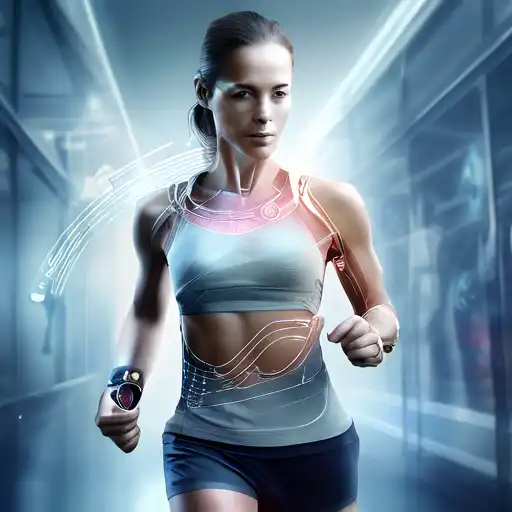The Rise of Wearable Technology in Health and Fitness
In recent years, wearable technology has emerged as a cornerstone in the health and fitness industry, revolutionizing how we monitor our physical activity, sleep patterns, and overall well-being. From smartwatches to fitness bands, these devices offer unprecedented insights into our health, empowering users to take control of their fitness journeys like never before.
Understanding Wearable Technology
Wearable technology refers to electronic devices that are worn on the body, often as accessories or part of clothing, designed to track and analyze health and fitness data. These devices leverage advanced sensors and connectivity features to provide real-time feedback on various health metrics, including heart rate, steps taken, calories burned, and even stress levels.
The Benefits of Wearable Tech in Fitness
The integration of wearable technology into fitness routines offers numerous benefits, such as:
- Enhanced motivation through goal setting and achievement tracking
- Improved accuracy in monitoring physical activity and health metrics
- Personalized fitness recommendations based on collected data
- Greater awareness of health trends over time
These advantages make wearable devices an invaluable tool for anyone looking to improve their health and fitness levels.
Popular Wearable Fitness Devices
The market is flooded with a variety of wearable fitness devices, each offering unique features to cater to different needs. Some of the most popular include:
- Smartwatches like the Apple Watch and Samsung Galaxy Watch, which combine fitness tracking with smartphone capabilities
- Fitness bands such as the Fitbit Charge and Garmin Vivosmart, focused primarily on health and activity tracking
- Specialized devices like the Whoop Strap, designed for athletes to monitor recovery and strain
Choosing the right device depends on your specific fitness goals and lifestyle.
How Wearable Technology is Shaping the Future of Health
Wearable technology is not just changing the way we approach fitness; it's also transforming healthcare. With features like ECG monitoring, blood oxygen level tracking, and fall detection, these devices are becoming essential tools for preventive health care. They enable early detection of potential health issues, encouraging timely medical intervention.
Moreover, the data collected by wearable devices can be shared with healthcare professionals, providing them with valuable insights into a patient's health outside the clinical setting. This integration of technology and healthcare is paving the way for more personalized and effective treatment plans.
Conclusion
The impact of wearable technology on health and fitness is undeniable. By offering detailed insights into our physical well-being, these devices are not only enhancing our fitness routines but also revolutionizing the way we monitor and manage our health. As technology continues to advance, we can expect wearable devices to become even more integrated into our daily lives, further blurring the lines between technology and wellness.
For those interested in exploring the world of wearable technology further, check out our guide on choosing the right fitness tracker to find the perfect device for your needs.
